Sundance 2021: New Frontier Highlights
From home, you can now participate in the film festival’s cutting-edge virtual vertical
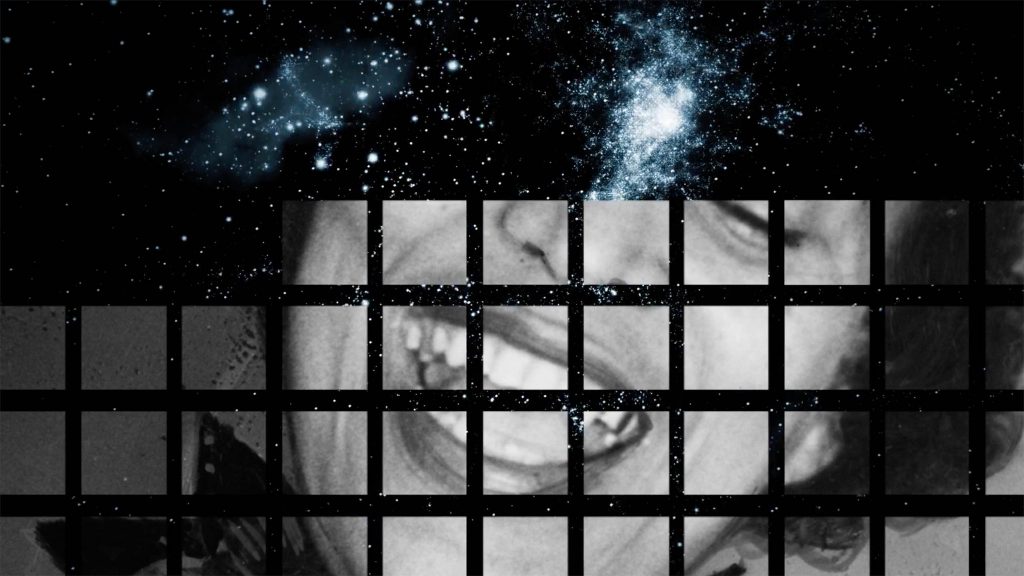
Since its debut in 2006, the Sundance Film Festival‘s New Frontier program has premiered and presented immersive, experiential works that challenge the way we think about cinematic storytelling, art and technology. Physical hubs in Park City, Utah allowed festival goers the opportunity to put on a headset (and once a snorkel) and slip into other worlds, powered by virtual or augmented reality. This year, film fans were discouraged from turning up to Main Street and the satellite movie theaters in the idyllic town, and the whole festival moved online. This pandemic-related health and safety shift has made New Frontier, this year aptly themed “Making Space,” more accessible than ever to a global audience. In fact, some of the highlights below do not even require a VR headset.
“When I realized that New Frontier would have to be entirely digital, I had to tear the whole thing apart and start from scratch,” Shari Frilot, the chief curator of New Frontier, tells us. “I asked, ‘What have we been building this exhibition on all along?’ The answer: it was on brick-and-mortar venues with headsets, computers and the people inside of them—people with smartphones and computers, all connected via WiFi, fiber optic cables and satellites.” This is when Frilot came to the realization that this bio-digital experience could take place at home, too.

Thus, the quest to build a custom spatial platform began in partnership with digital experience agency Active Theory. “New Frontier resides in the network of technologies that reach and connect people,” Frilot continues. “Satellites are a key component of this network, so we chose to situate our virtual venue to orbit the planet alongside the International Space Station, because our festival, quite literally, is inside satellites.”
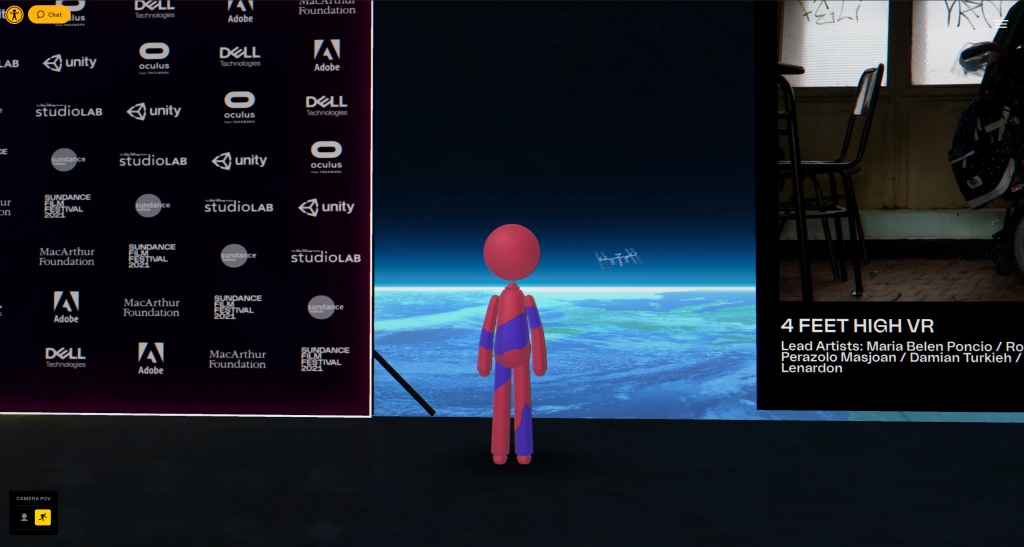
In many ways, the technology behind New Frontier paved the way for the digital Sundance of 2021. “Over time, we have built an incredible community of creative minds, visionaries and technologists who are truly magical in their capabilities,” Frilot says. “I turned to this community to ask questions, learn about what was needed and identify those who could help us achieve our goals—to present an incredibly ambitious slate of XR works, and to do it on a social platform that allows us to embody our own space, and gather with each other within it.”

New Frontier populates three online venues, all accessible through newfrontier.sundance.org. From the primary New Frontier Gallery, ticketed visitors can browse the complete line-up of XR works, half of which require only a computer. For anyone with a VR headset, the other New Frontier venues are also accessible. First, there’s the Cinema House, a social hub and online theater that features a stunning view of planet Earth and the International Space Station, as well as free first-come-first-serve screenings. Second, there’s Film Party, an interactive digital destination (and home to afterparties) with six screens and more intimate rooms available to Festival pass holders.
For anyone who has dreamed of heading to Park City for Sundance, this online iteration brings the festival—from screenings and exhibitions to panel discussions and parties—to you. And although we’ve selected highlights, all 14 works comprising New Frontier this year set an unprecedented standard.
Performance

7 Sounds
Available on demand throughout the festival for pass-holders, 7 Sounds is an immersive audio-video work that delves into the influence of sound. The vision of filmmaker Sam Green and musician JD Samson, the meditative piece unites seven audio recordings that alter our perception of time and place.
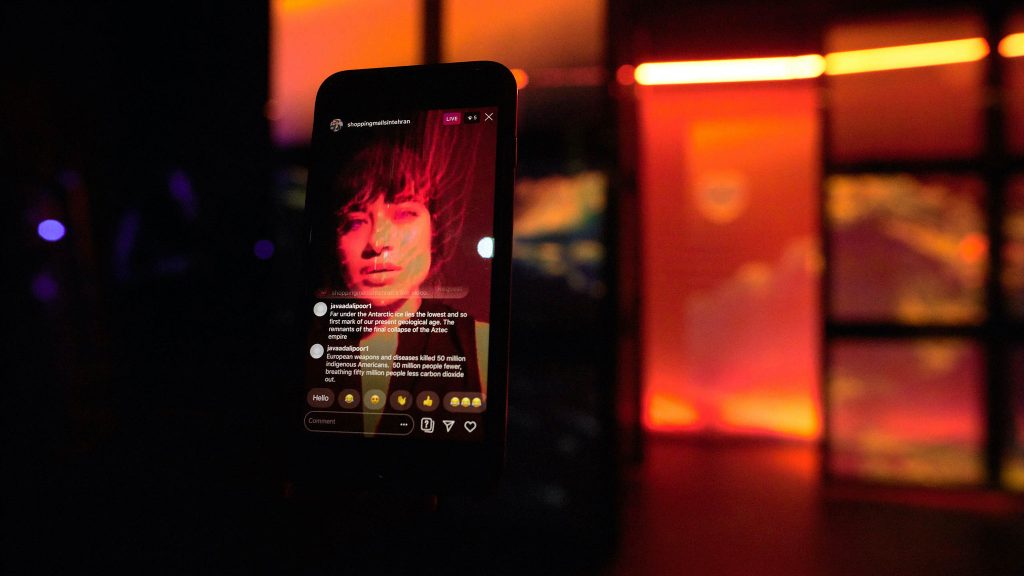
Rich Kids: A History of Shopping Malls in Tehran
Also available on demand throughout the festival, and possible to watch on either computer or mobile phone (with an Instagram account), Rich Kids: A History of Shopping Malls in Tehran cuts into the growing disparity between rich and poor people. From co-creators and lead artists Kirsty Housley and Javaad Alipoor, this “performance” taps into Instagram for a darkly comedic exploration.
Phone or Computer Accessible
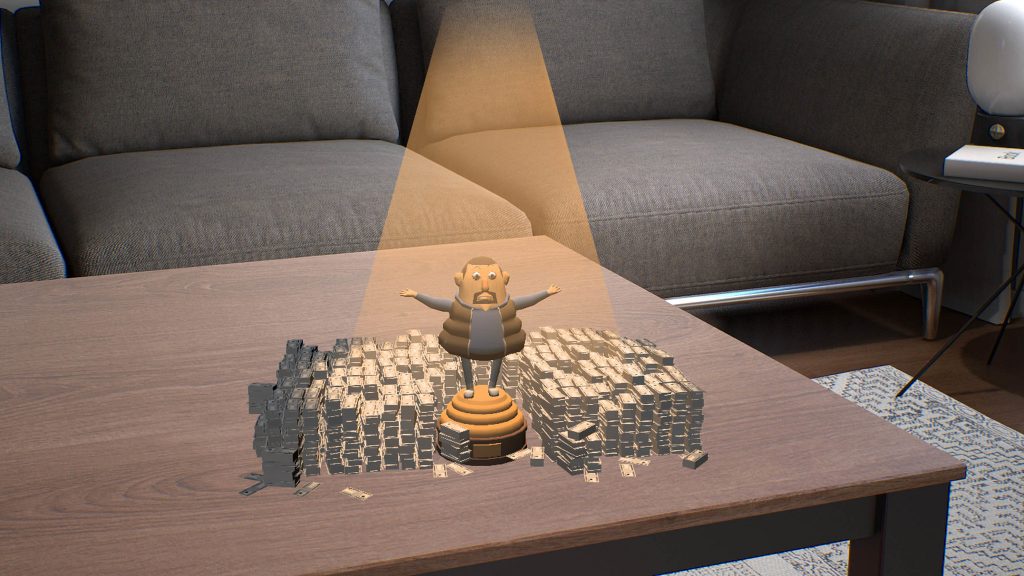
Fortune!
Available during New Frontier as either an iOS or Android app, for both phones and tablets, the funny four-minute-long augmented reality experience Fortune! explores society’s relationship to money and the value we impart it with (real or other). From filmmakers Brett Gaylor, Nicolas Bourniquel and Arnaud Colinart, as well as Atlas V, Arte France and the National Film Board of Canada, Fortune! stars Frank Bourassa, otherwise known as the world’s greatest counterfeiter.

Traveling the Interstitium with Octavia Butler
From a team of technologists, transmedia artists and experimental filmmakers that includes Sophia Nahli Allison, idris brewster, Stephanie Dinkins, Ari Melenciano and Terence Nance, Traveling the Interstitium with Octavia Butler transforms one’s computer into a portal to invisible. Butler provides the inspiration for the imaginative 30-minute adventure, which is also available on demand throughout the festival.

Weirdo Night
In Weirdo Night, legendary LA-based queer performance artist Dynasty Handbag (aka Jibz Cameron) brings her underground variety show to one’s home computer with the help of director Mariah Garnett. The 46-minute comedic experience was filmed in an empty theater, with a supporting cast of characters. Undeniably, it’s an event viewers will never forget. Cameron and Garnett’s project is available on demand throughout the festival, too.
VR Device Required
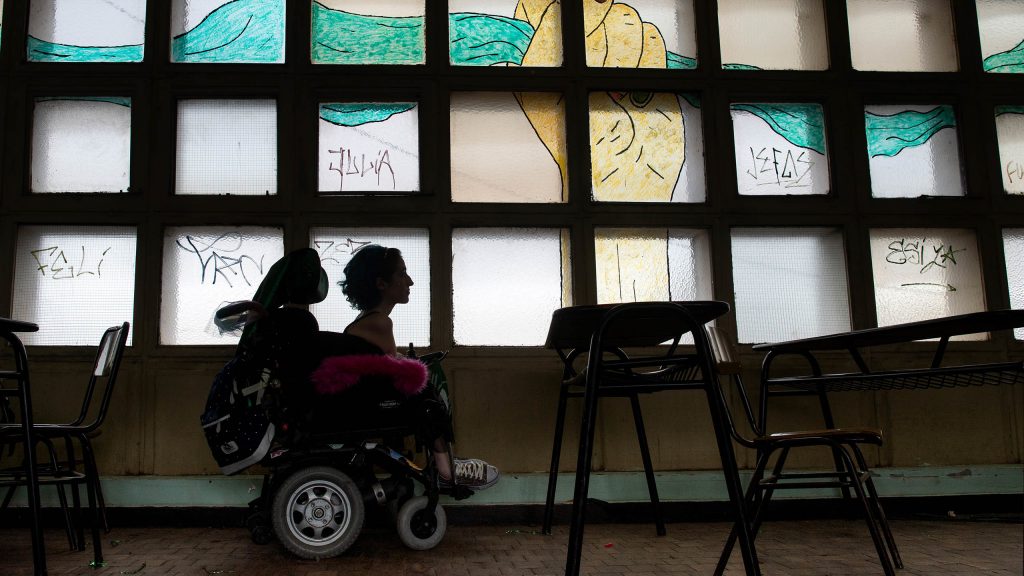
4 Ft High VR
Four 360-degree films and six episodes made for TV, featuring a mix of animation and live-action storytelling, come together as 4 Ft High VR, a glimpse into the life of 17-year-old wheelchair user Juana. The vision of filmmakers María Belén Poncio, Rosario Perazolo Masjoan, Damian Turkieh and Ezequiel Lenardón, the multi-layer project is available on demand during the festival.
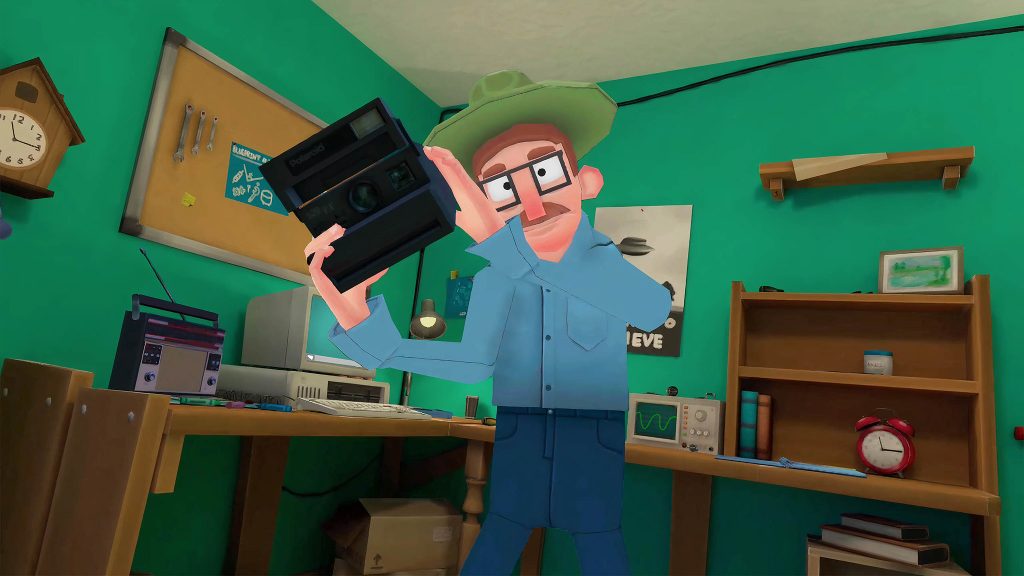
Tinker
A 45-minute immersive, animated experience, Tinker incorporates a live performance to bring its central figure—the Grandfather—to life. Directed by Lou Ward, Tinker lets the participant do exactly that: tinker in a workshop and build memories from moments. It’s a thoughtful, emotional event.
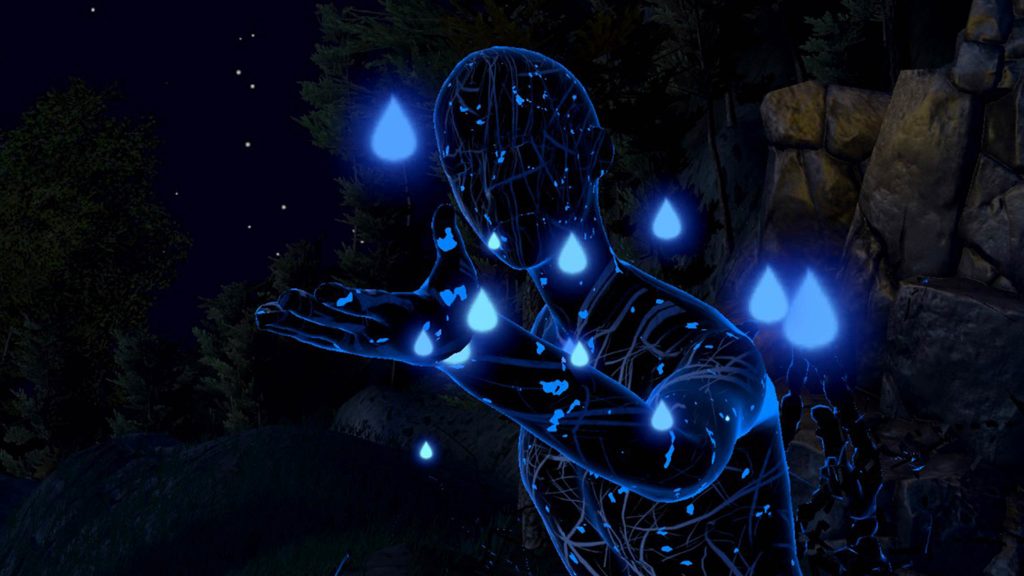
Nightsss
Weronika Lewandowska and Sandra Frydrysiak’s Nightsss stimulates the senses with an onomatopoeic soundscape (which call to mind ASMR) and evocative choreography across animated landscapes. The seven-minute work is based on Lewandowska’s spoken-word poem. Both women filmmakers directed its sense-oriented adaptation. Nightsss requires a desktop-tethered VR headset.
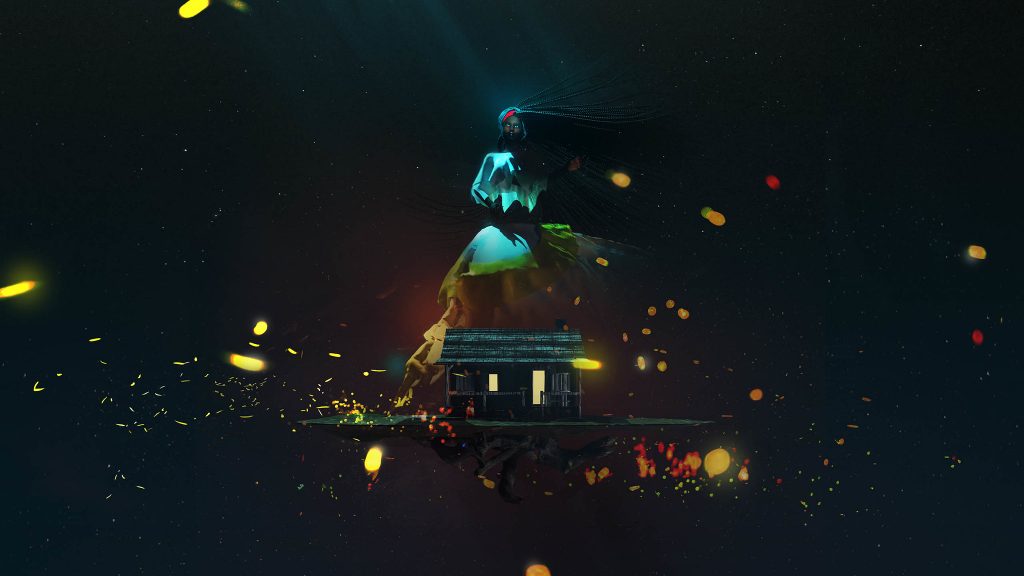
The Changing Same: Episode 1
Time travels work as an eye-opening narrative device in The Changing Same: Episode 1, where participants enter the Cracker House in present day New Jersey as an altercation with police triggers a journey through the history of mass incarceration and slavery. This 10-minute immersive experience from Michèle Stephenson, Joe Brewster and Yasmin Elayat clearly connects the racial violence of the past with the present. A desktop-tethered VR headset is required.

Prison X-Chapter 1: The Devil and The Sun
From Quechua filmmaker Violeta Ayala, Prison X-Chapter 1: The Devil and The Sun takes participants into a mythical 25-minute experience that marries elements of Bolivia’s San Sebastian Prison with nightmarish characters pinned from the afterlife and Andean underworld. This groundbreaking “hand-painted” virtual work also requires a desktop-tethered VR headset.
Hero still from Traveling the Interstitium with Octavia Butler by Sophia Nahli Allison, idris brewster, Stephanie Dinkins, Ari Melenciano and Terence Nance, courtesy of Sundance Institute, photo by Sophia Nahli Allison












